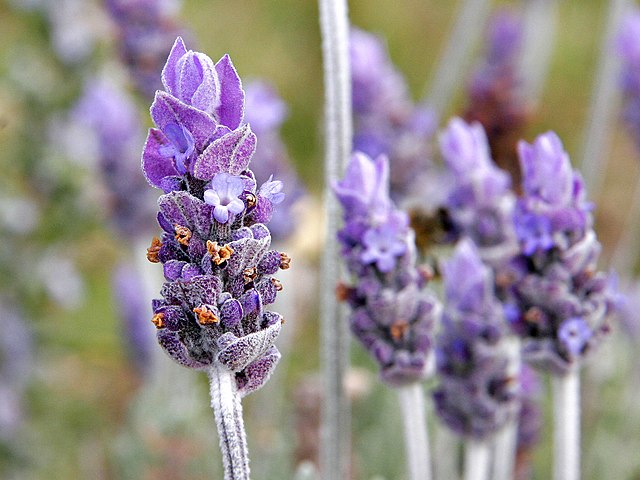Lavender (Lavandula) is a fragrant and versatile herb that’s not only prized for its aromatic qualities but also for its potential culinary, medicinal, and decorative uses. Here’s your ultimate guide to growing and harvesting lavender:
1. Choose the Right Lavender Variety:
- Lavender comes in different varieties, each with its unique scent and growth characteristics. The most common types include English lavender (Lavandula angustifolia), French lavender (Lavandula stoechas), and Spanish lavender (Lavandula stoechas).

2. Select a Suitable Location:
- Lavender thrives in well-drained soil and full sunlight. Choose a sunny spot in your garden with good drainage. Lavender doesn’t tolerate wet or soggy soil.
3. Soil Preparation:
- Lavender prefers slightly alkaline soil with a pH level of 6.5 to 7.5. If your soil is too acidic, you can amend it with lime to adjust the pH.
4. Planting Lavender:
- Plant lavender in the spring or fall when the soil is not too wet or cold. Space the plants about 18 to 24 inches apart to allow for air circulation.
5. Watering and Care:
- Lavender is relatively drought-tolerant and doesn’t require frequent watering. Water newly planted lavender regularly for the first year to help establish the roots. After that, water sparingly. Overwatering can lead to root rot.
6. Pruning and Maintenance:
- Pruning is essential to keep lavender healthy and encourage bushy growth. Prune your lavender in the spring to remove dead wood and shape the plant. Trim back the stems to promote new growth.
7. Harvesting Lavender:
- Lavender can be harvested when the flower buds are just beginning to open, typically in the summer when it’s in full bloom. Harvest in the morning when the essential oils are at their peak. Snip the flower stems just above the leaves, leaving some foliage on the plant.
8. Drying Lavender:
- To dry lavender, bundle the harvested stems and hang them upside down in a cool, dry place. The drying process can take a few weeks. Once dry, you can remove the lavender buds from the stems and store them in airtight containers.
9. Culinary Uses:
- Lavender can be used in various culinary creations. It’s often added to baked goods, desserts, and beverages. A little goes a long way, as lavender has a strong flavor.
Growing and harvesting lavender can be a rewarding experience, offering a fragrant and versatile herb for various uses. Whether you’re using it for culinary, aromatic, or decorative purposes, lavender can add beauty and aroma to your garden and enhance your daily life.











